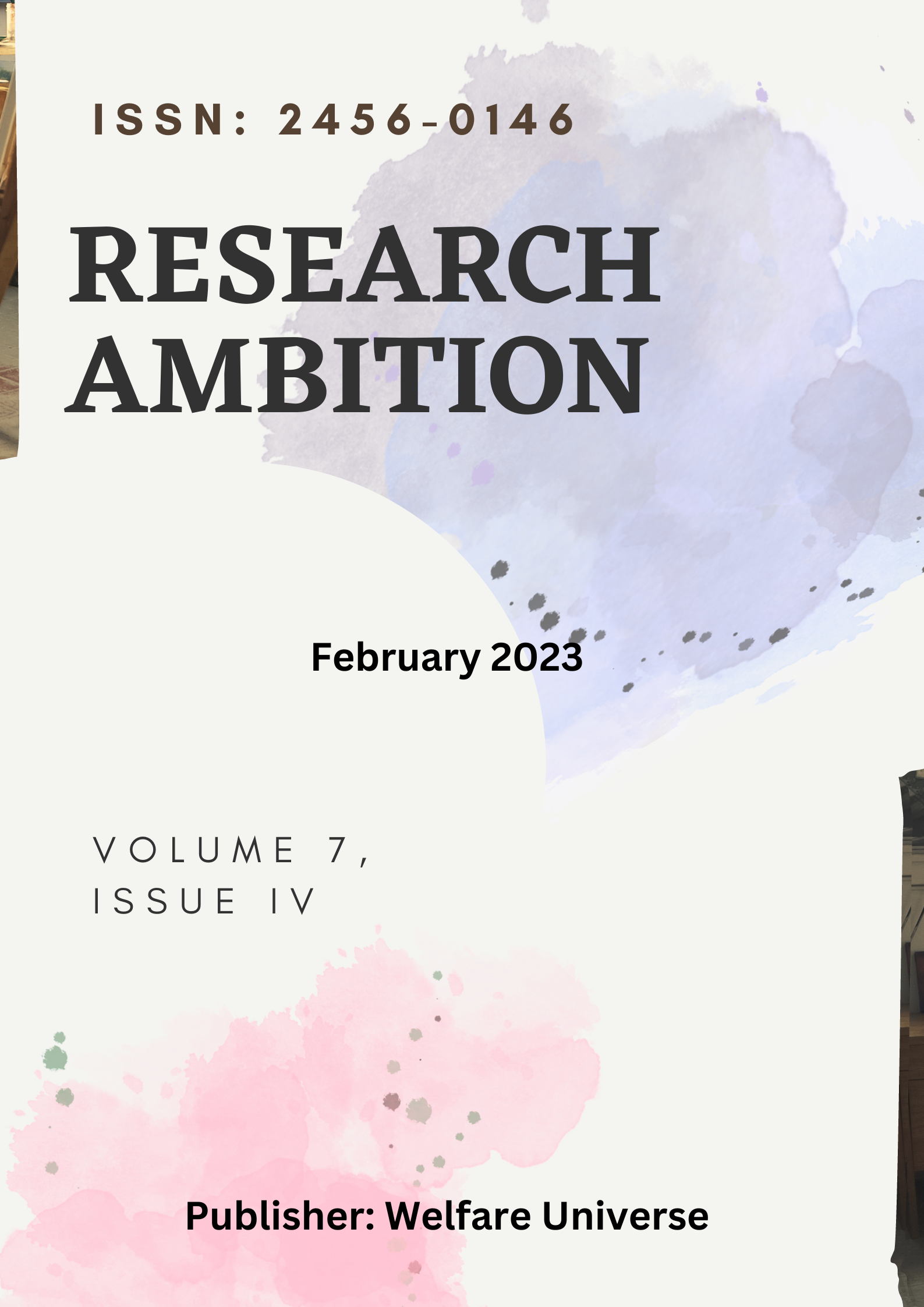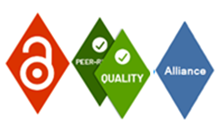From Pollution to Progress: Integration of Plastic Waste Management and SDG’s
DOI:
https://doi.org/10.53724/ambition/v10n1.07Keywords:
Plastic Pollution, Issues and Solutions, Legal Considerations, SDGs, Relationship, Waste ManagementAbstract
Every aspect of human life is impacted by plastic, including technology, packaging, home appliances, cars, buildings, water transportation, museums, hospitals, and educational institutions. Plastic is increasingly being used to improve industrial operations because it is a less expensive raw material. The packaging industry is one industry that has profited immensely from the surge in plastic consumption, creating more job possibilities across many nations. Plastic grocery bags and food scraps make up the majority of non-biodegradable domestic plastic waste. Plastic is increasingly being used in numerous electronic components, such as integrated circuits, printed circuit boards, chips, and light-emitting diodes, as a result of recent advancements in the electronics industry. Because plastic is malleable in terms of shape, fabrication, and customer-friendly qualities, especially when it comes to aesthetically pleasing agricultural equipment and components, the production of plastic parts has increased in the biomedical, agricultural, and automotive industries. Road pavements are made with asphalt mixtures that contain over 90% by weight of recovered plastic waste from municipal and industrial sources in an attempt to lessen the strain on landfills and the need for extraction. This paper attempts to identify causes of mishandling of plastic trash and gaps in available legislation, as well as to provide solutions. The research seeks to analyses a legal answer to the prevailing problem of plastic trash.
References
Seltenrich, N. (2015). New link in the food chain? marine plastic pollution and seafood safety. Environmental Health Perspectives, 123(2). https://doi.org/10.1289/ehp.123-134
Secretary General of United Nations
World Environment Day 2025 mobilizes commitment, action to end plastic pollution globally press release 5th June 2025
Dittenber, D. B., & GangaRao, H. V. (2011). Critical review of recent publications on use of natural composites in infrastructure. Composites Part a Applied Science and Manufacturing, 43(8), 1419–1429. https://doi.org/10.1016/j.compositesa.2011.11.019
Nations, F. a. a. O. O. T. U. (2021). Assessment of agricultural plastics and their sustainability: A call for action. Food & Agriculture Org.
Billion tons
Supra 6
Greenhouse Gases
Crowther, D., & Quoquab, F. (2023). Socially responsible plastic: Is This Possible? Emerald Group Publishing.
Setälä, O., Fleming-Lehtinen, V., & Lehtiniemi, M. (2013). Ingestion and transfer of microplastics in the planktonic food web. Environmental Pollution, 185, 77–83. https://doi.org/10.1016/j.envpol.2013.10.013
Ibid
Ibid
Pathan, S. I., Arfaioli, P., Bardelli, T., Ceccherini, M. T., Nannipieri, P., & Pietramellara, G. (2020). Soil Pollution from Micro- and Nanoplastic Debris: A Hidden and Unknown Biohazard. Sustainability, 12(18), 7255. https://doi.org/10.3390/su12187255
ibid
ibid
Yang, C. Z., Yaniger, S. I., Jordan, V. C., Klein, D. J., & Bittner, G. D. (2011). Most plastic products release estrogenic chemicals: a potential health problem that can be solved. Environmental Health Perspectives, 119(7), 989–996. https://doi.org/10.1289/ehp.1003220
Plastic waste management
Recycled Plastics (Manufacture & Usage) Rules, 1999.
µm=microns
Plastic Waste (Management & Handling) Rules, 2011.
Plastic Waste Management Rules, 2016
Plastic waste
Sustainable Development Goals
SDG 1: End Poverty in All Its Forms
Lobelle, D., & Cunliffe, M. (2010). Early microbial biofilm formation on marine plastic debris. Marine Pollution Bulletin, 62(1), 197–200. https://doi.org/10.1016/j.marpolbul.2010.10.013
Dugarova, E,. Global Trend: Challenges & Opportunities in The Implementation of the Sustainable Development Goals; Academic Press: New York.
SDG 2: End Hunger, Achieve Food Security & Improved Nutrition & Promote Sustainable Agriculture
Lakhiar, I. A., Yan, H., Zhang, J., Wang, G., Deng, S., Bao, R., Zhang, C., Syed, T. N., Wang, B., Zhou, R., & Wang, X. (2024). Plastic pollution in agriculture as a threat to food security, the ecosystem, and the environment: An overview. Agronomy, 14(3), 548. https://doi.org/10.3390/agronomy14030548
SDG 3: Ensure Healthy Lives& Promote Well-Being for All at All Age
SDG 4: Ensure Availability & Sustainable Management of Water & Sanitation for All
World Health Organisation. Microplastics in Drinking-Water; Geneva, Switzerland, 2019.
SDG 7: Ensure Access to Affordable, Reliable, Sustainable, & Modern Energy for All
Supra 31
SDG 8: Promote Sustained, Inclusive, & Sustainable Economic Growth, Full & Productive Employment, & Decent Work for All
Nandy, S., Fortunato, E., & Martins, R. (2022). Green economy and waste management: An inevitable plan for materials science. Progress in Natural Science Materials International, 32(1), 1–9. https://doi.org/10.1016/j.pnsc.2022.01.001
SDG 9: Build Resilient Infrastructure, Promote Inclusive & Sustainable Industrialization, & Foster Innovation
Supra 18
SDG 10: Reduce Inequality within & among Countries
Supra 36
SDG11: Make Cities Inclusive, Safe, Resilient, & Sustainable
SDG12: Ensure Sustainable Consumption & Production Patterns
Dittenber, D. B., & GangaRao, H. V. (2011). Critical review of recent publications on use of natural composites in infrastructure. Composites Part a Applied Science and Manufacturing, 43(8), 1419–1429. https://doi.org/10.1016/j.compositesa.2011.11.019
SDG13: Take Urgent Action to Combat Climate Change & Its Impacts
Supra 31
SDG 14: Conserve & Sustainably Use the Oceans, Seas, & Marine Resources for Sustainable Development
Crowther, D., & Quoquab, F. (2023). Socially responsible plastic: Is This Possible? Emerald Group Publishing.
SDG17: Partnerships for the Goals
Supra 18
Downloads
Published
How to Cite
Issue
Section
ARK
License

This work is licensed under a Creative Commons Attribution-NonCommercial 4.0 International License.
















